It is no secret: We love growing our own peppers. If you are just getting started, you may wonder which varieties are the easiest peppers to grow at home.
We’re excited that you’ve decided to grow peppers! Pepper Geek has lots of great resources about how to grow peppers from seed and how to use them. In this article, we’ll share some of the easiest pepper varieties to grow for beginners.
These pepper varieties offer low maintenance, strong yields, and great flavor and/or heat. We’ll touch on why we love each of these easy pepper varieties and where you can get seeds.
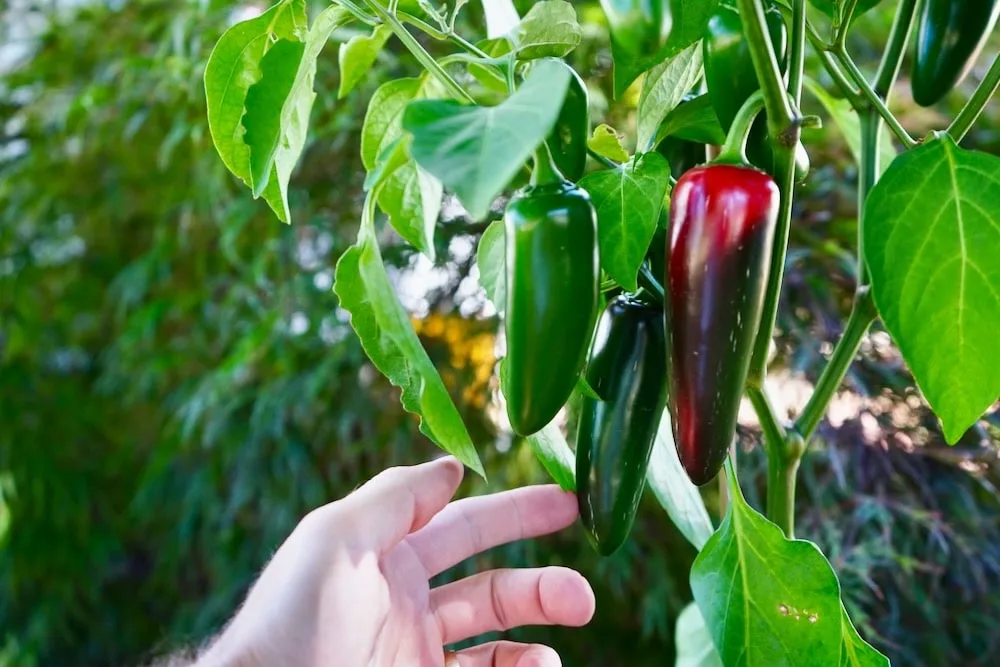
In This Article
Easiest Hot Peppers To Grow
If you are looking for some of the easiest spicy peppers to grow, look no further! We’ve got our favorites here, ranked in order of heat level.
Jalapeño
A classic. Jalapeño peppers are spicy, but not too hot! They have a unique flavor and have been bred to grow in a variety of interesting sizes and colors. We love the perfect heat level, the thick, crunchy walls, and the respectable plant yields.
About Jalapeños
- Heat level: Low-medium (3,000-8,000 SHUs)
- Plant size: 2-4 feet
- Pepper size: Medium
- Low maintenance
- Yield: Medium-high
- Get seeds
Though yields can sometimes be hit or miss depending on variety, you can’t beat the jalapeño’s low maintenance and great flavor. The jalapeño is a true superstar in the hot pepper world, lending itself well to poppers, pickle chips, and powders.
NMSU is known for breeding new varieties of the jalapeño. These include the lemon spice jalapeño, pumpkin spice, and orange spice. These jalapeño types each have a beautiful, unique color when fully ripe.
One of our favorite varieties for flavor is the jalafuego, with a bit of extra kick for spice lovers. If you want to grow highly usable hot peppers with minimal work in the garden, look no further than the jalapeño pepper.
Learn more about jalapeño peppers here
Serrano Pepper
Serranos offer a bit more heat in a smaller size than jalapeños. Serrano peppers are slender and long, turning from green to bright red when fully ripe. They are usually picked when bright green, and they are super easy to grow at home!
About Serranos
- Heat level: Medium (10,000 SHUs)
- Plant size: 2-3 feet
- Pepper size: Small
- Low maintenance
- Yield: High
- Get seeds
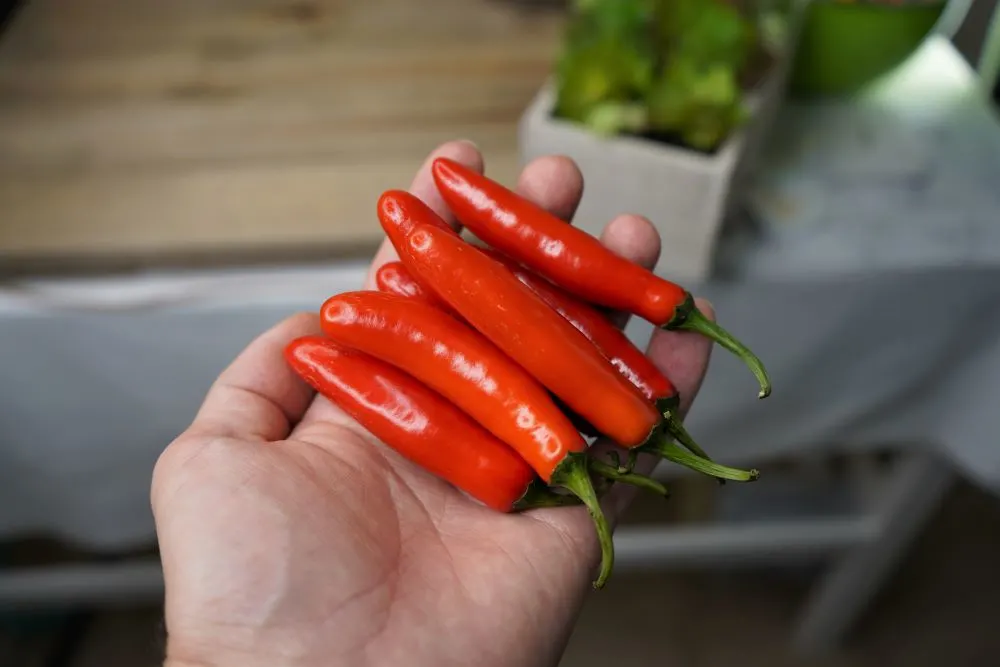
Serranos are another must-have pepper in the Pepper Geek garden. These plants just pump out the peppers with almost no maintenance whatsoever.
Fun fact: Some serrano peppers can be also be disease resistant. In one year’s garden, most of our other pepper plants got mosaic virus, but our serrano plant was not affected!
Give the plants enough light, water, and nutrients, and you will have hoards of serrano peppers, often early in the season. We grew our first serrano plant from an organic store bought pepper.
Learn more about serrano peppers here
Cayenne Pepper
If you want to step the heat up a bit more beyond the serrano, try growing cayenne peppers. There are dozens of types of cayenne peppers, from traditional red varieties, to orange, yellow, and even purple cayennes.
About Cayenne Peppers
- Heat level: Hot (20,000 SHUs)
- Plant size: 2-4 feet
- Pepper size: Small-medium
- Low maintenance
- Yield: High
- Get seeds
Since cayenne powder and hot sauces are so popular, the plants are popular amongst gardeners too. As a result, there are several types of red cayenne (watch us taste 7 different cayenne peppers).
The peppers range in size from small (like the ring of fire), to over 12″ long (like the Joe’s long cayenne). I love to grow cayennes specifically for making fermented hot sauce and homemade cayenne powder.
Quintisho Pepper
If you’re looking to grow a more rare hot pepper, the ‘quintisho’ is a strong, easy-to-grow variety. We were impressed in every way by our plant, from its fast growth, to its sturdy stems, and delicious, fiery fruits.
About Quintisho Peppers
- Heat level: Hot (30,000 SHUs)
- Plant size: 2-3 feet
- Pepper size: Small
- Low maintenance
- Yield: High
- Get seeds
From the start, our quintisho plant had lush, green foliage with sturdy stems. This strong growth continued through until harvest, with the plant barely requiring a stake.
Flavor is much different from jalapenos and cayennes, as it comes from a different species, Capsicum chinense. Expect bright, floral and citrusy notes and a slow, long-lasting burn. The small fruits are about the size of a small grape. They are perfect for metering out the desired heat level to your food.
Habanero Pepper
Another common grocery store pepper variety, the habanero is a largely maintenance free pepper to grow at home. They can be extremely productive, and have enough heat to satisfy most spice lovers.
About Habaneros
- Heat level: Hot (250,000+ SHUs)
- Plant size: 3-4 feet
- Pepper size: Small-medium
- Low maintenance
- Yield: High
- Get seeds
Not only are habanero peppers easy to grow, they are also one of the best tasting peppers (in our opinion). The Capsicum chinense species of pepper all share a similar floral and lemon-like aroma, and red habaneros are perfectly balanced.
There are also lots of fun habanero varieties available to grow. We found that the smaller snow white habanero pepper was extremely productive and easy to maintain.
Habaneros are also perfect for making homemade hot sauce. We like to freeze our habaneros and other hot varieties and use them throughout the year to make fiery hot sauces.
Hot, sweet, fragrant, easy to grow and highly productive, what more could you want? If you can handle the heat level, we highly recommend growing these easy pepper plants in your garden!
Ghost Pepper
Believe it or not, the ghost pepper (bhut jolokia) is a very easy plant to grow. Who knew that one of the world’s hottest peppers is so simple to cultivate at home? If you’re looking for serious heat and high yields, browse the various ghost pepper varieties.
We have a full guide on how to grow ghost peppers from seed.
About Ghost Peppers
- Heat level: Superhot (1,000,000 SHUs)
- Plant size: 3-4 feet
- Pepper size: Medium
- Some maintenance
- Yield: High
- Get seeds
There are two major gripes with growers who try to grow ghost peppers. One is that the seeds don’t germinate quickly. However, we have had our ghost pepper seeds sprout within just 5 days using our simple germination technique.
The second is that the growing season is longer, and this is true. However, this is true of most superhot pepper varieties, so the ghost pepper is no exception. You can expect to wait 90-100 days after transplanting outdoors before you get your first ripe pepper.
However, the wait is well worth it (if you like it extra-spicy). Our red, chocolate, peach, and yellow ghost pepper plants have produced hundreds of ripe pods from early July through to the end of the season.
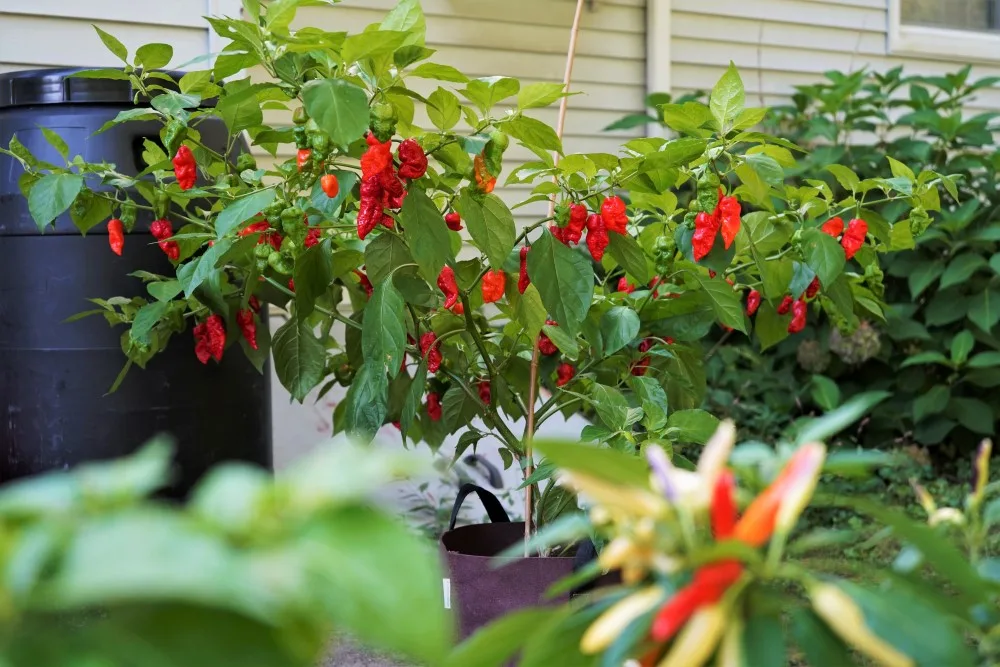
Of all of the superhot pepper varieties we have grown, ghost peppers are by far the least troublesome and the most productive. You’ll get more peppers, and earlier in the growing season.
Easiest Sweet Peppers To Grow
If you’d rather pass on the heat, here are a few non-spicy pepper varieties that are super easy to grow.
Shishito Pepper
Year after year, this Japanese frying pepper is one of the most productive peppers in our garden. Shishitos are no-heat peppers, perfect for serving as a pan-fried side dish. They have delicate walls and a super-crunchy texture. Great flavor and versatility!
About Shishito Peppers
- Heat level: None (0 SHUs)
- Plant size: 1-2 feet
- Pepper size: Medium
- Low maintenance
- High yields
- Get seeds
On a single, healthy shishito pepper plant, you can expect to harvest between 25-50+ peppers. With enough soil for the roots to spread out, these compact plants can pump out a ton of peppers, fast!
We always grow at least one shishito plant, knowing that it will always be the easiest plant in the garden. One day you’ll pull back the leaves and find dozens of fresh peppers ready for harvest. Plus, shishitos are typically harvested green, so they’re quick to harvest, as early as 60 days from transplanting.
Fun fact: Shishitos eventually turn red when fully ripened, but are typically picked green for frying or pickling.
Learn how to make pickled shishitos here
Carmen Sweet Pepper
The Carmen pepper is a hybrid bull’s horn pepper variety. Also known as “corno di toro,” these sweet peppers are large horn shaped peppers.
About Carmen Peppers
- Heat level: None (0 SHUs)
- Plant size: 4-5 feet
- Pepper size: Large
- Low maintenance
- Great yields
- Get seeds

The Carmen pepper has been very productive in our experience. It also has a wonderful flavor, sweeter than most bell peppers we have tasted, even when still green.
Note: You will need to provide vertical support for your Carmen plants to avoid them falling over. Use a tomato cage or even just a tall, strong stake to keep the plants upright throughout the season.
Bell Pepper
While bell peppers are common in grocery stores, they can easily be grown in your own back yard. With a seemingly endless number of bell pepper types, you can pick and choose the best variety for your tastes.
Read More: How To Grow Bell Peppers in Pots
About Bell Peppers
- Heat level: None (0 SHUs)
- Plant size: 3-4 feet
- Pepper size: Large
- Low maintenance
- Lower yields
- Get seeds
Some bell pepper varieties, like the Ninja hybrid, are known to be resistant to disease. Other bell varieties will carry different characteristics, such as a larger size or different color. However, most bell pepper plants will be relatively simple to grow.
Yields tend to be on the lower side, but the size of each pepper makes up for the lower numbers. We find that larger fruit varieties always yield fewer peppers per plant.
We tend to get between 10-15 full sized bell peppers per plant, while some small pepper varieties can yield in the 100s of peppers per plant!
The bell pepper is a great option for a first time pepper grower because it is a familiar food that is highly usable in the kitchen. The plants require minimum effort to keep them going strong.
Learn to grow sweet peppers (video):
Sweet Banana Pepper
Banana peppers are another common pepper variety that you can easily grow yourself. If you are looking for non-spicy peppers, be sure to buy the sweet banana pepper seeds or plants, as there are also hot varieties.
About Banana Peppers
- Heat level: None (0 SHUs)
- Plant size: 2-3 feet
- Pepper size: Medium
- Low maintenance
- Lower yields
- Get seeds
Another classic pepper that most people can recognize, the banana pepper is very easy to grow. Medium sized pods loosely resemble bananas when they are young due to their often curved shape and yellow color.
The banana pepper is a great pepper to use for pickling or in salads. The sweet, crunchy peppers are craveable and beautiful.
Fun fact: When banana peppers ripen, they turn from yellow to orange and finally red!
Basics of Growing Peppers
In general, all peppers are fairly easy to grow in most climates. There are a few essential conditions that all varieties need to thrive. Here are the bare minimum steps for growing healthy pepper plants.
- Keep it sunny. Peppers love full sunlight. This means at least 6 hours of sunlight per day. If you can’t provide this much sun, the plants will still grow, but may yield fewer peppers.
- Fertilize regularly. Always keep potted pepper plants well fed with a basic all-around fertilizer. Plants require plenty of nitrogen when growing leaves, and potassium when producing peppers.
- Don’t over-water. Over-watering is one of the most common mistakes new pepper gardeners make. Allow the first inch of your plant’s soil to dry between waterings.
- Keep it warm. Ideal daytime temperatures for peppers are between 70-80°F. Peppers will suffer in temperatures below 55°F. Any temperature below 60°F and the plants may begin to drop flowers.
I hope you found some new pepper varieties to grow in your garden this year! These are some of the easiest peppers to grow, but hardly the most interesting.
If you’re up for a bit more of a challenge in the future, check out some of these bizarre pepper varieties that you can try growing.
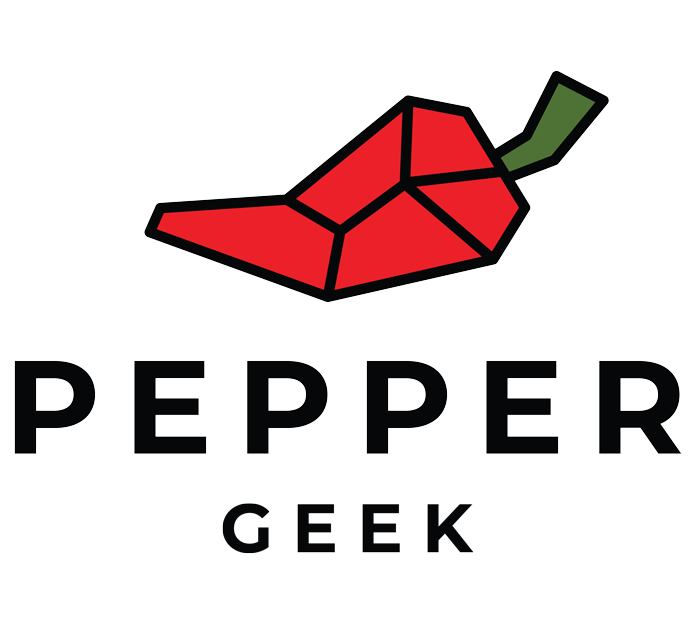

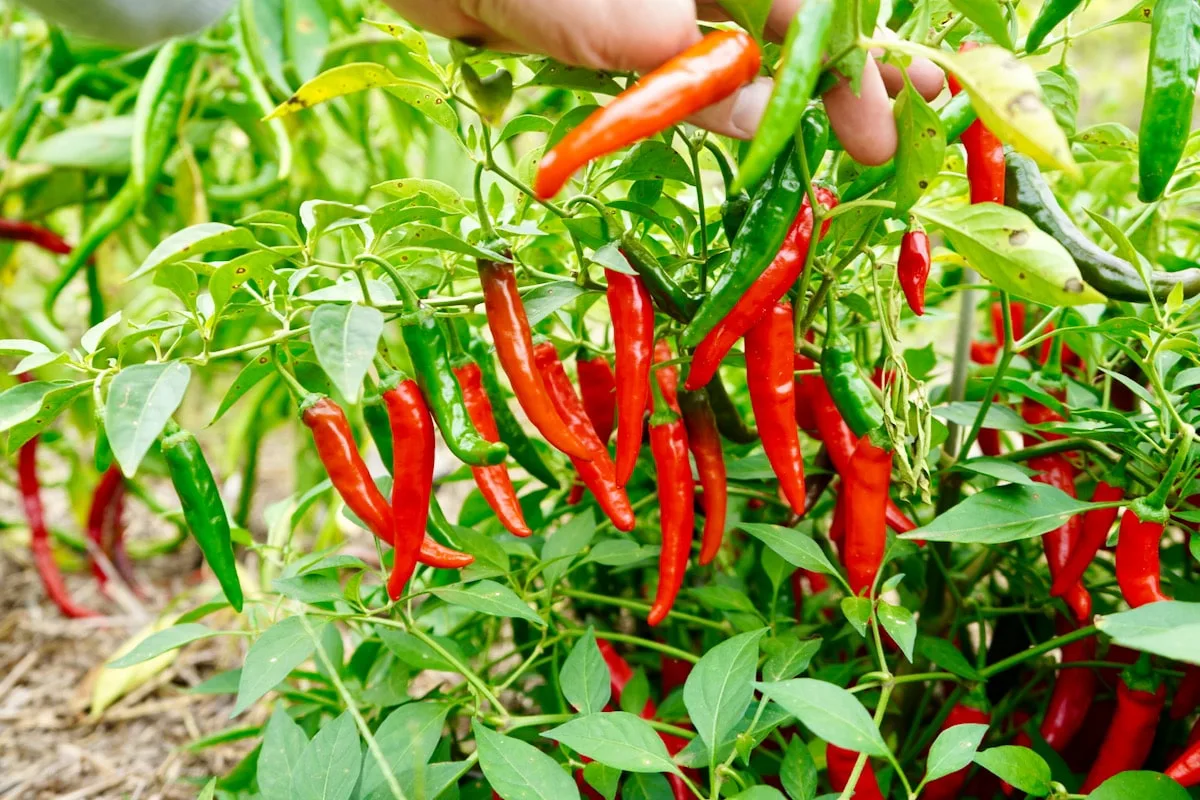
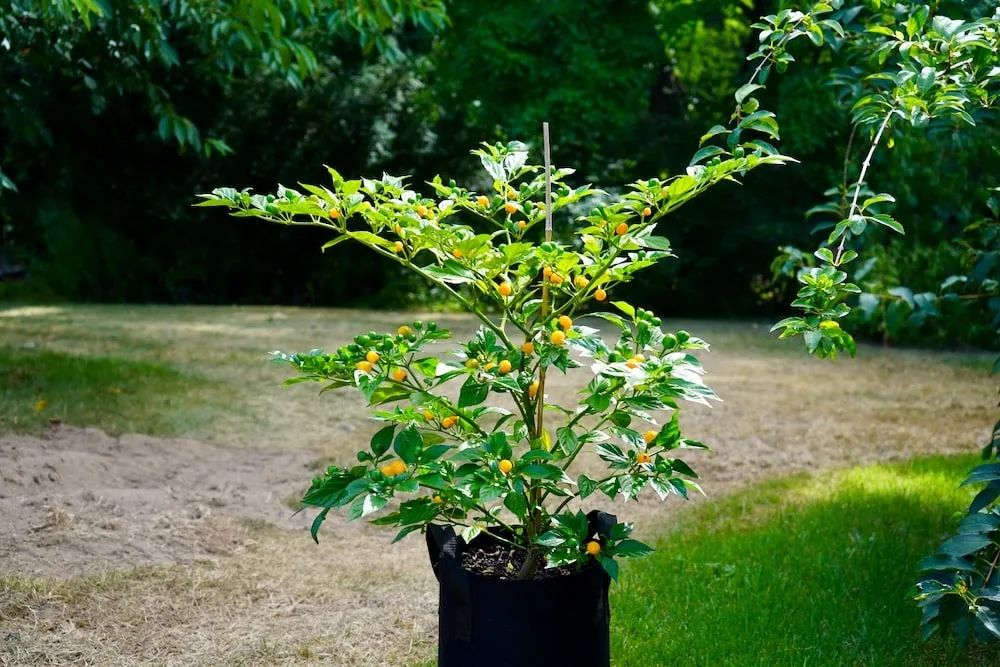
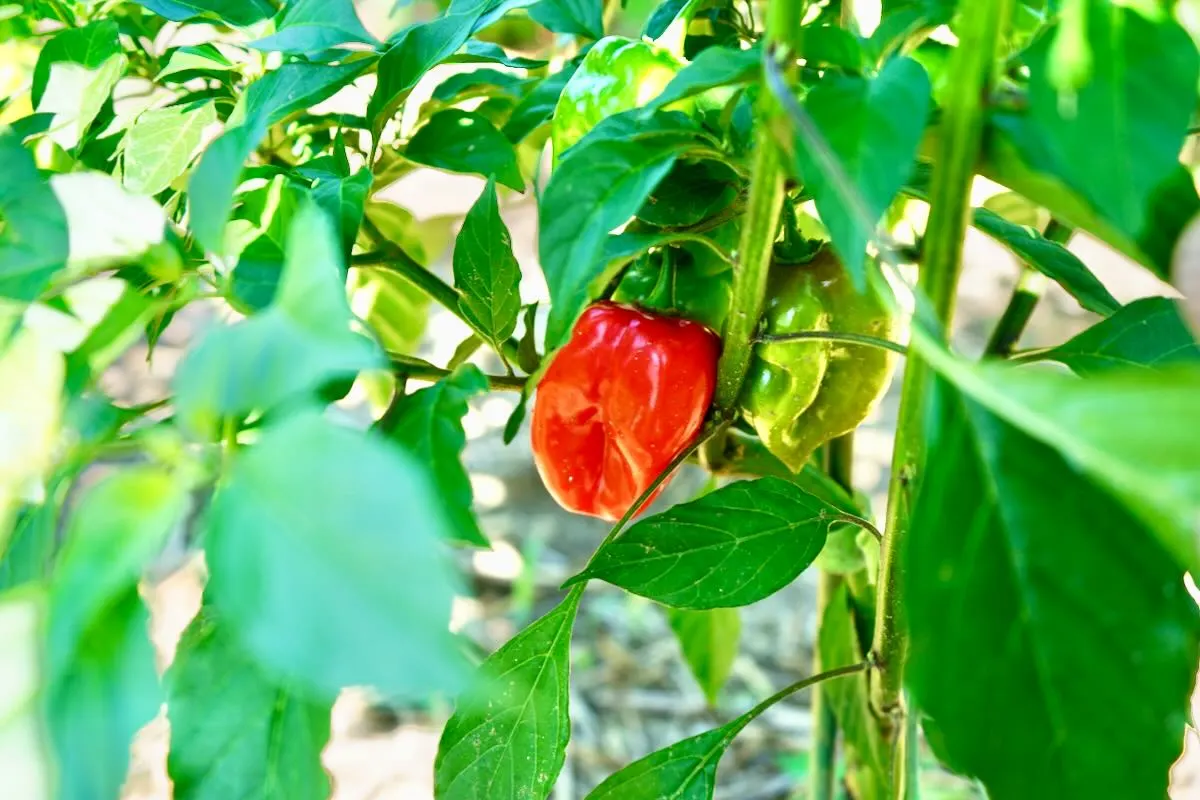
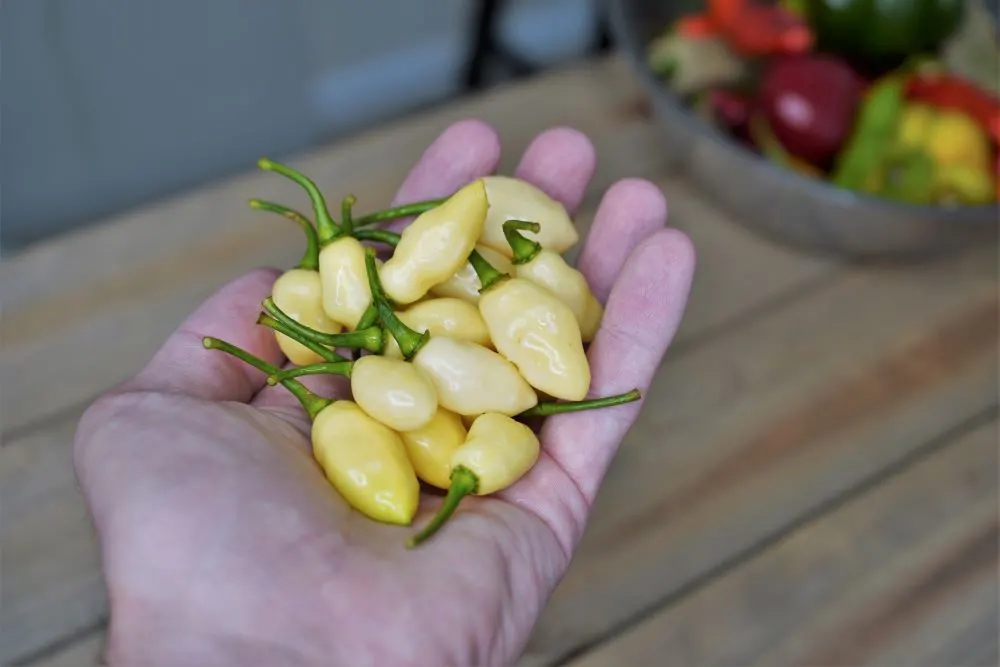
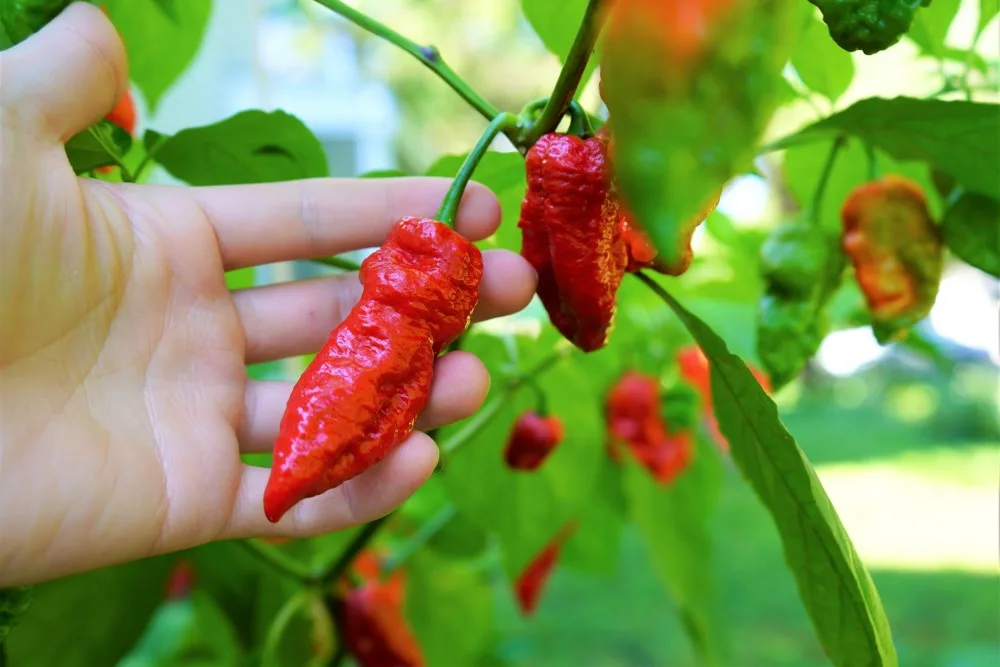
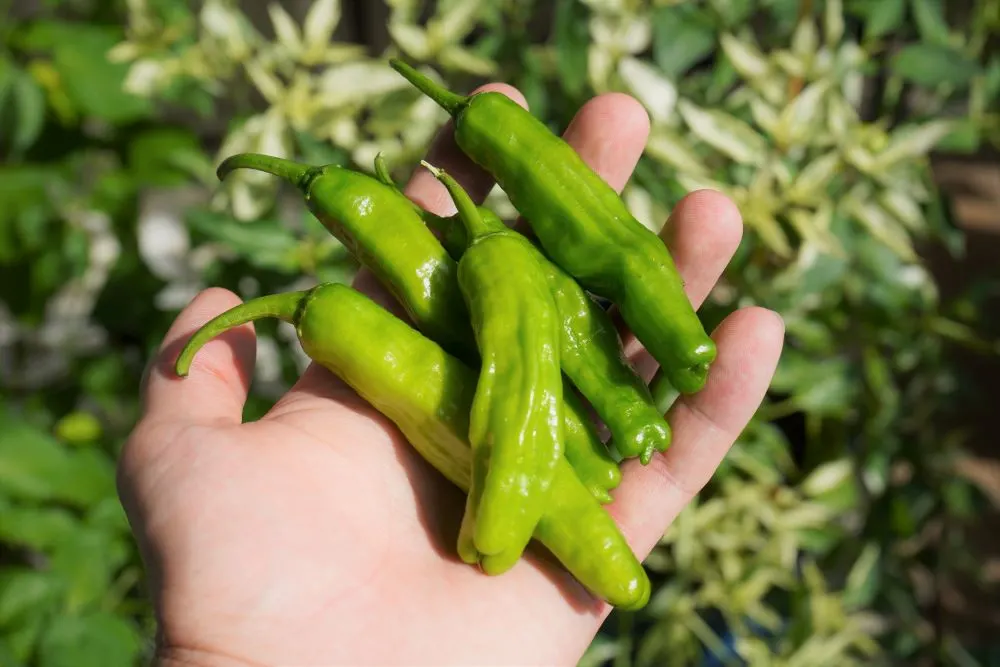
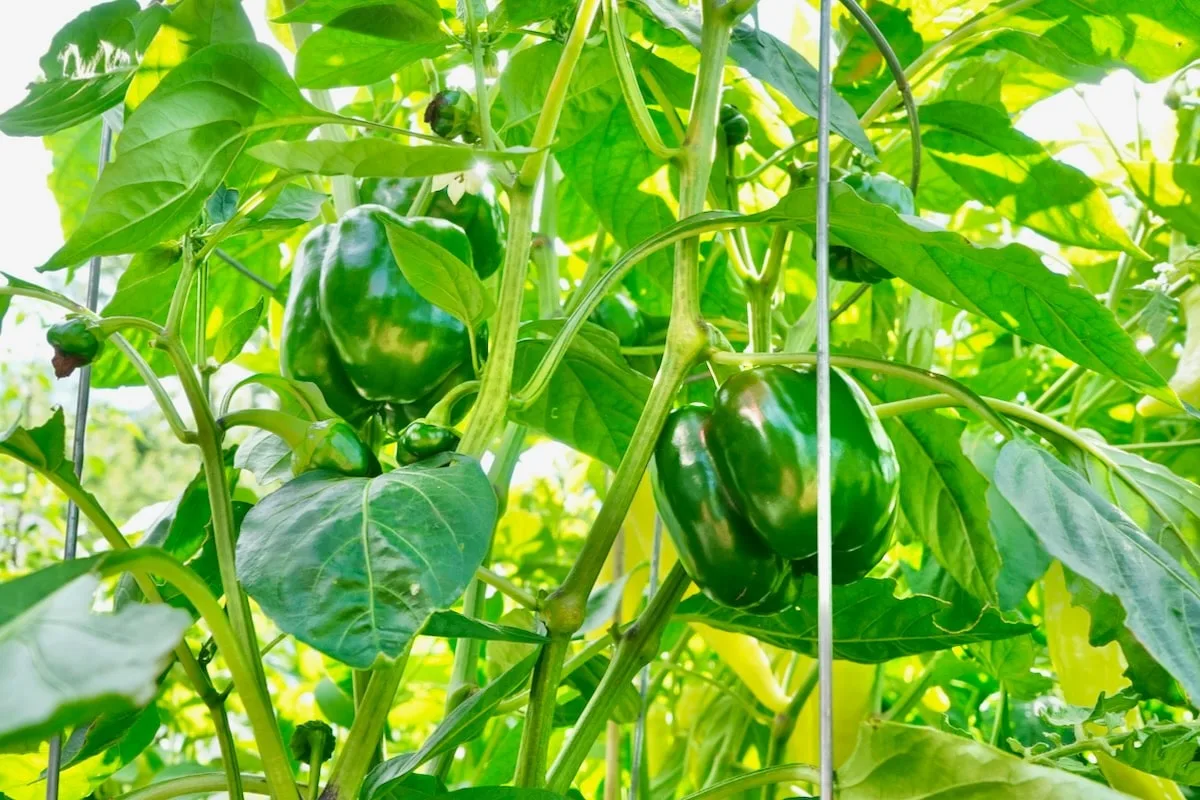
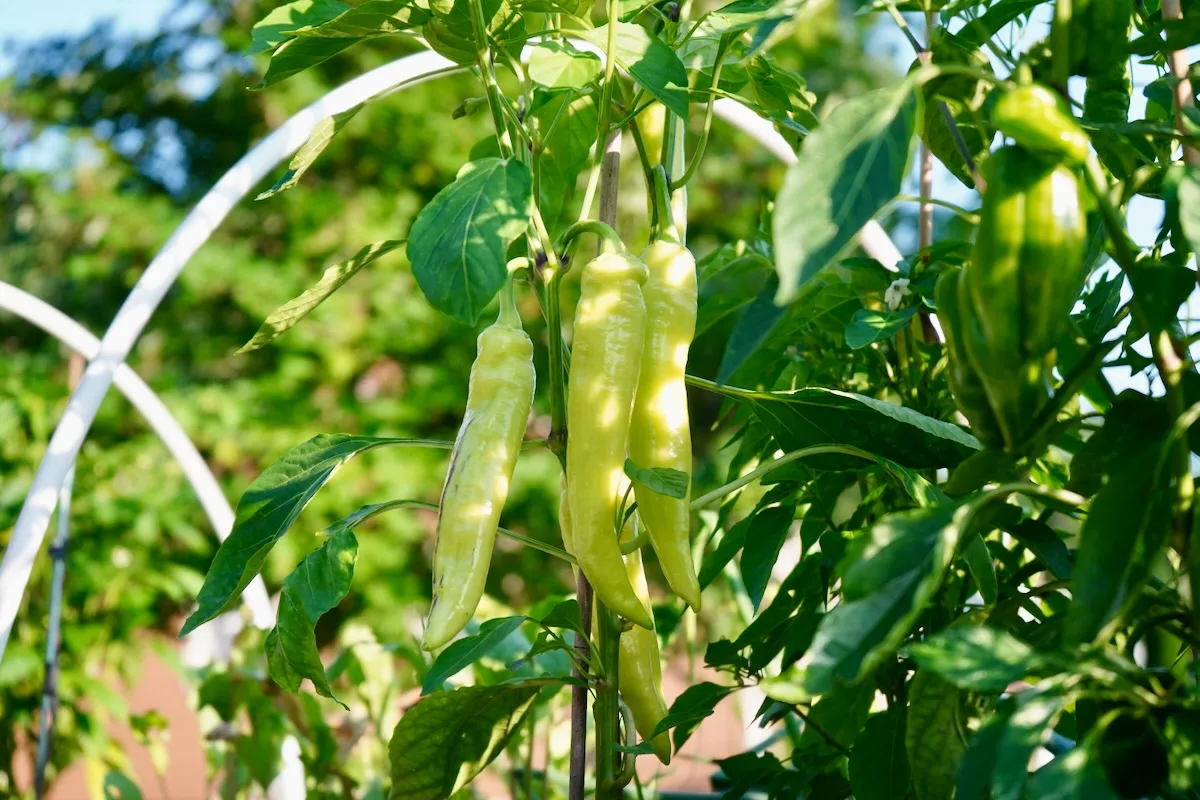

A j stewart
Sunday 5th of November 2023
I live in N.Y. and im looking for good producing and germination of Scotch Bonnet pepper seeds for a dear friend for christmas . please tell me where i can get the best quality seeds thank you
Jon T
Sunday 5th of November 2023
It's interesting to me that you included the bell pepper. I've had terrible luck growing them for years. When I talk about gardening with people, they often say, "I've had no luck with peppers", and then I ask if they were doing bells. Yup. My cousin this year bought a fully grown bell plant, and got a single pepper off it. Compared to hatch types like Big Jim, where I got like 30-40 massive peppers, and bell doesn't seem too great, in my opinion.
Lisa
Thursday 18th of August 2022
I live in the center of the US (Missouri) climate zone 6. This season I tried growing Gypsy peppers in 5 gallon buckets (2 plants per bucket) and I'm really impressed with their performance! They started producing early and just keep coming. Described as a cross between a sweet Italian frying pepper and a Bell, I've found them to be reasonably thick-walled and very versatile - you can use them interchangably with bell peppers in omlets, spaghetti sauce, chili, whatever. At 4"x2" they are big enough to stuff, and I even made a batch of rather large sweet cream cheese poppers :) The thing I like most about them besides being so prolific and disease free is the color. They start out a beautiful almost glowing light green, then slowly transition to a rosy orange and finally to a deep red. It's like watching a sunset. Definitely my new favorite sweet pepper. Also have to give a nod to the Giant Marconi I tried. They look just like an Anaheim, but have produced a LOT more fruit than any Anaheim type I've ever grown and yes, some of them get pretty large. I just picked the biggest one of the season and it measures a very respectable 7 inches.
Dennis
Monday 17th of January 2022
When I was a kid my Dad used to get these hot pickled cherry peppers I loved. I would love to grow my own but would also like a canning, pickling recipe. thank you
Tony
Sunday 15th of November 2020
I've grown chilli's for about 20 years and have never had a failure with Apache, lots of hot little bullets make lovely jam and sauce. I've grown 5 varieties this year lemon aji did really well, cayenne fruited early but only about 25 fruits per plant, Zimbabwe black was last to fruit and pretty disappointing. I live in North East England so the weather isn't too good but I grow them outdoors and usually get a decent crop.